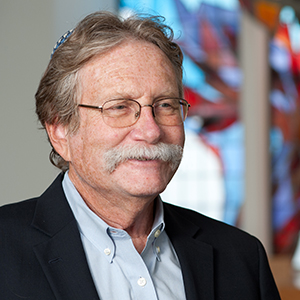At the Threshold

The ninth chapter of Numbers tells a tale that results in a rule and an institution. The first anniversary of the Exodus (on the 14th of the first month of Nisan) was approaching for the recently freed Israelites, and they were reminded that the Paschal sacrificial rites were meant to be annual observances. They were instructed by Moses to make the necessary preparations. But there were people who had recently contracted ritual impurity [tumah] by contact with the dead, perhaps because they had buried deceased relatives. And they knew that this impurity, which was beyond their control, precluded them from participating in a rite that was, in effect, an annual renewal of membership in the community of Israel. Their plaint was brought to Moses, who understood the predicament of these well-meaning Israelites, but did not know how to resolve it, and thus brought the case to God.
God agreed that for such innocent victims of circumstance anxious to be part of the people Israel, another opportunity to make up for one’s absence in Nisan was called for. Thus, the rule was promulgated that certain conditions would allow for a “make-up day” exactly a month later, in what we call Iyyar. But what situations would permit such a second chance (what came to be known as Pesah Sheni, a second Passover)?
Given the narrative, we expect that among the reasons the Torah gives for why a person might have legitimately missed the national ritual in Nisan is being in a state of tumah. But perhaps surprisingly, the rule also offers the second Passover to a person who was a long distance away from the Temple at the ritual’s appointed time: “When any party—whether you or your posterity—who is (on 14 Nisan) defiled by a corpse or is on a distant journey would offer a passover sacrifice to the Lord, they shall offer it in the second month (Iyyar), on the fourteenth day of the month, at twilight” (Numbers 9:10–11). This naturally raises the question of just what constitutes a “distant journey.” How far away must a person be at the original time of the ritual to qualify for the “make-up day”? The Mishnah (in Pesahim 9:2) reports a rather remarkable statement from Rabbi Eliezer, which is in turn related to what was already a scribal tradition back then, to wit, the placement of a dot over the last letter in the word “Rehokah,” meaning “distant”:
What is a “distant journey”? . . . Rabbi Eliezer says: From the very threshold of the Temple courtyard and beyond. And Rabbi Yosei said: This is why there is a dot over the heh (the final letter) in the word reḥokah; it is to say that it is not because he is actually distant; rather, it applies even from the threshold of the Temple courtyard and beyond.
Imagine: someone is literally just steps away from the Temple courtyard on the 14th of Nisan, and because that person is not inside, it is considered to be accidental and deserving of a second opportunity to enter and fulfill the rite. For years, I asked myself the obvious question: If a person was at the threshold of the Temple at the appointed time, why didn’t they just go in? I came to understand it only when my Masorti colleagues in Israel described how many Israelis—people who would describe themselves as “secular”—would congregate in great numbers just outside their synagogues on Yom Kippur. Not going in; just being there for reasons that somehow impelled them to draw near but could not quite get them to enter. These Jews, I realized, are part of the answer to the question of why someone would be at a threshold and not go in. They sense that there is something there—something more—that their lives need, but they are not quite sure they will fit in, that they will be welcomed, and understood, and respected. So they stand at the gateway.
It is hardly just an Israeli phenomenon. It is true throughout the Jewish world, and no doubt among other religious faiths as well. These people who are (figuratively) at the threshold are not necessarily accounted for in the various demographic reports from Pew and others. But they are there, and the message of Pesah Sheni is that we are forbidden to give up on them. It is we who have to seize the second chance to meet them, to respect them, to assure them that what is beyond the threshold is nurturance and spiritual growth, not judgment.



